A Guide To The Logo Design Process
Creating a new logo design is challenging. Research and an in-depth understanding of the company you are designing for are crucial. First, you must understand the company’s market position, culture and values. Both from the viewpoint of its customers and employees. This information is then filtered and distilled to produce the final logo.
Breaking down the logo design process into the following steps will make it more manageable.
A logo doesn’t sell (directly), it identifies.
Paul Rand
Naming Your Brand
Every brand, company or product created needs a name before a logo design can start. The naming process begins with a brief outlining the characteristics of the brand, its industry, and its main competitors.
Create a long list of names and whittle them to a final list. Research these names for availability, likability and memorability. These days, naming a company has become a real challenge. Most URLs and company names are already in use. Coming up with an appropriate name requires creativity, research and time.
Deciding The format Of Your Logo
When you have your name, the design process can start. During the design stage, you should consider several logo options. For example, should the brand be typographic with a graphical twist? (like FedEx, Amazon or Virgin, for instance). Or will it have a symbol along with its text? (like Airbnb, Nike or Starbucks)?
The Importance Of Visual Research When Creating A Logo
Visual research is the most critical stage in logo design. Two phrases to remember when designing are:
- Nothing is created without inspiration.
- Garbage in garbage out.
You must do lots of visual research to avoid ending up with an uninspiring logo. Start your visual study by checking out Behance, Pinterest, Dribble, and books/magazines. Getting out and about with a camera and capturing colours and typefaces that work well together is also a good idea.
Inspiration can come from anywhere. Get inspired by the brands you admire and how they build their identities. Does their logo change in certain situations? Or does it stay consistent? What colours and fonts do they use, and why do they work well together?
Get some magazines and cut bits out to mix, match, and put in a scrapbook. This approach is a fast way of playing with colour, type and images to see how they work together. It is also a great way of training your eye and practising your design skills.
What Makes A Good Logo?
Good designers spend time researching and understanding what a company does and its culture before putting pen to paper. The characteristics of a good logo are as follows:
- Simple. The design should be readable from a distance and printable in small sizes.
- Memorable. People should be able to understand it immediately and recall it. Will it still look good in 10 years?
- Versatility. Can it be used in different sizes and colours and still be recognisable?
- Fit. Is it appropriate for the company and industry the company is in? Does it communicate what that company does?
Design is thinking made visual.
Saul Bass
Sketching Your Logo Ideas
Take the visual research you have collected for inspiration and sketch any ideas that come to mind. Then, keep drawing until you have exhausted all your lines of thought. Leaving the project for a few hours is a good idea.
When you return to the project, it will be with fresh eyes, and you should immediately see your most suitable sketches. You may also have thought of some new ideas to sketch out.
These sketches can be rough as long as you know what they represent. I like to think of these as rough starting points, be more generous with these as messy as you like, and draw over them or refine the shapes again. Use whatever media you prefer; let your ideas flow and be as loose as possible.
Transferring Your Sketches To Vector Logos
For this stage, you will need a design professional or at least know how to use a vector drawing programme such as Adobe Illustrator. First, scan or photograph your favourite sketches and transfer them to the computer. Then, to create vector artwork, trace these rough sketches.
Picking The Right Font For Your Logo
Picking a font that sits well with your symbol takes work. Becoming familiar with fonts and their quirks can take years of design experience. And to understand which characteristics of which fonts will make them work well in any given situation.
Sometimes a font might be perfect. Sometimes it might need customising to work well with a symbol. It takes a skilled eye to judge precisely what needs to be changed to make a font work well within the overall brand design.
It is essential to spend time repositioning the text and symbol to find just the right juxtaposition of elements that sit well together as a brand. And for them not to appear as two random objects shoehorned together.
Deciding What Colours Your Logo Should Be
In the past, I have paused TV programmes and photographed the screen to capture an unusual colour combination. There are plenty of places to find inspiring colour combinations, paint charts and interior design magazines; there are even books dedicated to the subject.
The primary consideration is that the symbol and text are readable from a distance in your chosen colours. Also, will people with colour blindness read the logo correctly? The most common colour blindness is between green and red. However, some people also need help distinguishing between blue and yellow. And some people can’t see any colour (making contrast a critical aspect of your logo).
If your company’s name is too light, you’ve wasted your marketing, advertising, and design budget.
Design is the silent ambassador of your brand.
Paul Rand
Showing The Look at Feel Of Your Brand On Mood Boards
A mood board is a collection of various assets such as photography, typography, colours, phrases, or words. The words your brand uses to express itself are just as important as their visual elements. The mood board should spell out who you are as a brand and your verbal and visual tone of voice. You may produce several mood boards covering very different looks and feels for your brand.
Refrain from overcomplicating your mood board; it should show enough flavour of your brand essence but not so much as to confuse. Some rough rules to follow are:
- Use no more than two fonts, and make sure they work harmoniously.
- Keep the colour palette simple with a maximum of 4-6 key colours.
- Finally, check to make sure that secondary colours and tints are balanced.
- Don’t just look at the visual elements use phrases that communicate your brand values, customer benefits and unique selling points (USPs).
Remember that these are rough rules and that all rules are made to be broken if you have a clear creative vision.
Your USPs make your business, product or service unique and better than your competitors. Communicating USPs succinctly will gain you customers. Working your USPs into your key phrases and headings will quickly communicate to potential customers what you are all about as a brand and what the benefits of your brand are to them.
Determining If Your New Logo Works
When selecting a final logo, it can help to apply it to the kind of marketing collateral your company would produce, such as a brochure cover, business card or website home page. In addition, seeing the logo in situ will help you decide which logo is more robust, easier to read and has the right feel for your company.
Drawing Your Final Logo As Artwork
Use Adobe Illustrator to draw a vector version of your final logo design. If you lack the skills, find a professional to do it for you. The final logo has to read well when it is minimal such as on a business card.
You will need your final logo in different formats and colours. Typical formats are eps/ai, png/jpg and sometimes a scalable vector graphic or SVG for short. SVG is a web-friendly vector (not a pixel-based image), and it uses maths to plot points and lines on a grid. So you can scale the logo to any size and keep its clarity and sharpness.
You should produce your logo in colour, black on white and white on transparent; this will cover most of the uses you will need.
I strive for two things in design: simplicity and clarity. Great design is born of those two things.
Lindon Leader
Creating Brand Guidelines For Your New Logo
Producing some brand guidelines that the whole company can use is essential. Branding and marketing only work if they are consistent. Getting all employees onboard is paramount to ensuring your new brand succeeds. The last thing you want is an individual employee’s taste overriding the hard work you have put into creating a brand framework.
Guidelines can be simple two-page documents giving you the basic logo usage, fonts and colours. However, they can also be full-blown manuals with hundreds of pages or anything in between.
With more extensive guidelines, you would expect image style suggestions and digital templates to be provided for print and online. However, it is a fine balance between producing enough guidance for employees to easily and willingly follow and bombarding them with too much confusing information.
A Final Note
If you remember these Logo design steps and follow the advice above, you are going in the right direction.
- Name Your Brand
- Deciding The format Of Your Logo
- Gathering Your Visual Research
- What Makes A Good Logo?
- Sketching Your Logo Ideas
- Transferring Your Sketches To Vector Logos
- Picking The Right Font For Your Logo
- Deciding What Colours Your Logo Should Be
- Showing The Look at Feel Of Your Brand On Mood Boards
- Determining If Your New Logo Works
- Drawing Your Final Logo As Artwork
- Creating Brand Guidelines For Your New Logo
I hope this article has been useful to you. Please remember that designing a logo should be enjoyable and a great way to express your inner creativity—best of luck.
Design is not a thing you do, it is a way of life.
Alan Fletcher
Photo by Severin Höin on Unsplash

